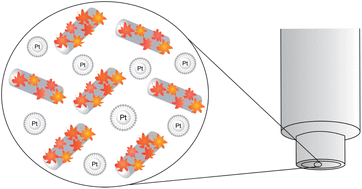Halloysite clay nanotubes and platinum nanoparticles dispersed in ionic liquid applied in the development of a catecholamine biosensor
Abstract
Halloysite clay

* Corresponding authors
a
Department of Chemistry, Laboratory of Biosensors, Federal University of Santa Catarina, Florianópolis, SC, Brazil
E-mail:
danielabrondani@hotmail.com
b Institute of Chemistry, Laboratory of Molecular Catalysis, Federal University of Rio Grande do Sul, Porto Alegre, RS, Brazil
Halloysite clay

 Please wait while we load your content...
Something went wrong. Try again?
Please wait while we load your content...
Something went wrong. Try again?
D. Brondani, C. W. Scheeren, J. Dupont and I. C. Vieira, Analyst, 2012, 137, 3732 DOI: 10.1039/C2AN35313J
To request permission to reproduce material from this article, please go to the Copyright Clearance Center request page.
If you are an author contributing to an RSC publication, you do not need to request permission provided correct acknowledgement is given.
If you are the author of this article, you do not need to request permission to reproduce figures and diagrams provided correct acknowledgement is given. If you want to reproduce the whole article in a third-party publication (excluding your thesis/dissertation for which permission is not required) please go to the Copyright Clearance Center request page.
Read more about how to correctly acknowledge RSC content.
 Fetching data from CrossRef.
Fetching data from CrossRef.
This may take some time to load.
Loading related content
